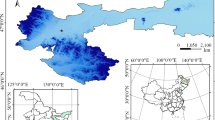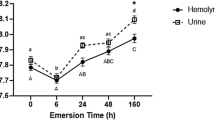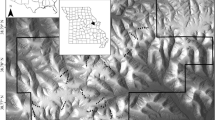Abstract
Arenophryne rotunda is a small (2–8 g) terrestrial frog that inhabits the coastal sand dunes of central Western Australia. While sand burrowing is a strategy employed by many frog species inhabiting Australia’s semi-arid and arid zones, A. rotunda is unique among burrowing species because it lives independently of free water and can be found nocturnally active on the dune surface for relatively extended periods. Consequently, we examined the physiological factors that enable this unique frog to maintain water balance. A. rotunda was not found to have any special adaptation to reduce EWL (being equivalent to a free water surface) or rehydrate from water (having the lowest rehydration rate measured for 15 Western Australian frog species), but it was able to maintain water balance in sand of very low moisture (1–2%). Frogs excavated in the field were in dune sand of 4.4% moisture content, as a consequence of recent rain, which was more than adequate for these frogs to maintain water balance as reflected by their low plasma and urine osmotic concentrations. We suggest that in dry periods of the year, A. rotunda can achieve positive water balance by cutaneous water uptake by burrowing deeper into the substrate to where the percent water content is greater than 1.5%.







Similar content being viewed by others
Abbreviations
- EWL :
-
Evaporative water loss
References
Bentley PJ, Lee AK, Main AR (1958) Comparison of dehydration and hydration of two genera of frogs (Heleioporus and Neobatrachus) that live in areas of varying aridity. J Exp Biol 35:678–684
Boutilier RG, Stiffler DF, Toews DP (1992) Exchange of respiratory gases, ions and water in amphibious and aquatic amphibians In: Feder ME, Burggren WW (eds) Environmental physiology of the amphibia. University of Chicago Press, Chicago, pp 81–124
Burbidge AA, George AS (1978) The flora and fauna of Dirk Hartog Island, Western Australia. J R Soc West Aust 60:71–90
Christian K, Parry D (1997) Reduced rates of water loss and chemical properties of skin secretions of the frogs Litoria caerulea and Cyclorana australis. Aust J Zool 45:13–20
Fawcett JK, Scott JE (1960) A rapid and precise method for the determination of urea. J Clin Pathol 13:156–159
Heatwole H (1984) Adaptations of amphibians to aridity. In: Cogger GH, Cameron EE (eds) Arid Australia. Surrey Beatty, Chippinton Norton, pp 177–222
How RA, Dell J (1989) Vertebrate fauna of Banksia woodlands. J R Soc West Aust 71:97–98
Lee AK (1968) Water economy of the burrowing frog, Heleioporus eyrei (Gray). Copeia 1968:741–745
Lee AK, Mercer EH (1967) Cocoon surrounding desert-dwelling frogs. Science 157:87–88
Loveridge JP (1970) Observations on nitrogenous excretion and water relations of Chiromantis xerampelina (Amphibia, Anura). Arnoldia 5:1–6
Main AR (1968) Ecology, systematics and evolution of Australian frogs. Adv Ecol Res 5:37–86
Main AR, Bentley PJ (1964) Water relations of Australian burrowing frogs and tree frogs. Ecology 45:379–382
McClanahan LL (1972) Changes in body fluids of burrowed spadefoot toads as a function of soil water potential. Copeia 1972:209–216
McClanahan LL, Baldwin R (1969) Rate of water uptake through the integument of the desert toad, Bufo punctatus. Comp Biochem Physiol 28:381–389
Nobel P (1983) Biophysical plant physiology and ecology. Freeman, New York
Packer WC (1963) Dehydration, hydration, and burrowing behavior in Heleioporus eyrei (Gray) (Leptodactylidae). Ecology 44:643–651
Read JL (1999) Abundance and recruitment patterns of the trilling frog (Neobatrachus centralis) in the Australian arid zone. Aust J Zool 47:393–404
Read K, Keogh JS, Scott IAW, Roberts JD, Doughty P (2001) Molecular phylogeny of the Australian frog genera Crinia, Geocrinia, and allied taxa (Anura: Myobatrachidae). Mol Phylogenet Evol 21:294–308
Roberts JD (1981) Terrestrial breeding in the Australian leptodactylid frog Myobatrachus gouldii (Gray). Aust Wildl Res 8:451–462
Roberts JD (1984) Terrestrial egg deposition and direct development in Arenophryne rotunda Tyler 1976, a myobatrachid frog from coastal sand dunes at Shark Bay, W.A. Wildl Res 11:191–200
Roberts JD (1990) The biology of Arenophryne rotunda (Anura: Myobatrachidae): a burrowing frog from Shark Bay, Western Australia. In: Berry PF, Bradshaw SD, Wilson BR (eds) Research in Shark Bay. Report of the France-Australe Bicentenary Expedition Committee. Western Australian Museum
Roth JJ (1973) Vascular supply to the ventral pelvic region of anurans as related to water balance. J Morphol 140:443–460
Shoemaker VH, McClanahan LL (1975) Evaporative water loss, nitrogen excretion and osmoregulation in phyllomedusine frogs. J Comp Physiol 100:331–345
Shoemaker VH, Balding D, Ruibal R, McClanahan LL (1972) Uricotelism and low evaporative water loss in a South American frog. Science 175:1018–1020
Shoemaker VH, Hillman SS, Hillyard SD, Jackson DC, McClanahan LL, Withers PC, Wygoda ML (1992) Exchange of water, ions, and respiratory gases in terrestrial amphibians. In: Feder ME, Burggren WW (eds) Environmental physiology of the amphibia. University of Chicago Press, Chicago, pp 125–150
Thorson TB (1955) The relationship of water economy to terrestrialism in amphibians. Ecology 24:100–116
Tyler MJ, Roberts JD, Davies M (1980) Field observations on Arenophryne rotunda Tyler, a leptodactylid frog of coastal sandhills. Aust Wildl Res 7:295–304
Tyler MJ, Smith LA, Johnstone RE (2000) Frogs of Western Australia. Western Australian Museum, Perth
Withers PC (1995) Cocoon formation and structure in the aestivating Australian desert frogs, Neobatrachus and Cyclorana. Aust J Zool 43:429–441
Withers PC (1998) Evaporative water loss and the role of cocoon formation in Australian frogs. Aust J Zool 46:405–418
Withers PC, Guppy M (1996) Do Australian desert frogs co-accumulate counteracting solutes with urea during aestivation? J Exp Biol 199:1806–1816
Withers PC, Roberts JD (1993) Water balance response in the terrestrial Western Australian frog, Myobatrachus gouldii (Anura: Myobatrachidae). J R Soc West Aust 76:49–52
Withers PC, Hillman SS, Drews RC (1982) Water loss and nitrogen excretion in sharp-nosed reed frogs (Hyperolius nasutus: Anura, Hyperoliidae). J Exp Biol 97:335–343
Withers PC, Hillman SS, Drews RC (1984) Evaporative water loss and skin lipids of anuran amphibians. J Exp Zool 232:11–17
Wygoda ML (1984) Low cutaneous evaporative water loss in arboreal frogs. Physiol Zool 57:329–337
Acknowledgements
This project was funded by an Australian Research Council grant and was undertaken with animal ethics approval from the University of Western Australia and licences issued by the Department of Conservation and Land Management. We thank Gary Cass for providing advice on measuring soil properties.
Author information
Authors and Affiliations
Corresponding author
Additional information
Communicated by I.D. Hume
Rights and permissions
About this article
Cite this article
Cartledge, V.A., Withers, P.C., Thompson, G.G. et al. Water relations of the burrowing sandhill frog, Arenophryne rotunda (Myobatrachidae). J Comp Physiol B 176, 295–302 (2006). https://doi.org/10.1007/s00360-005-0051-x
Received:
Revised:
Accepted:
Published:
Issue Date:
DOI: https://doi.org/10.1007/s00360-005-0051-x




